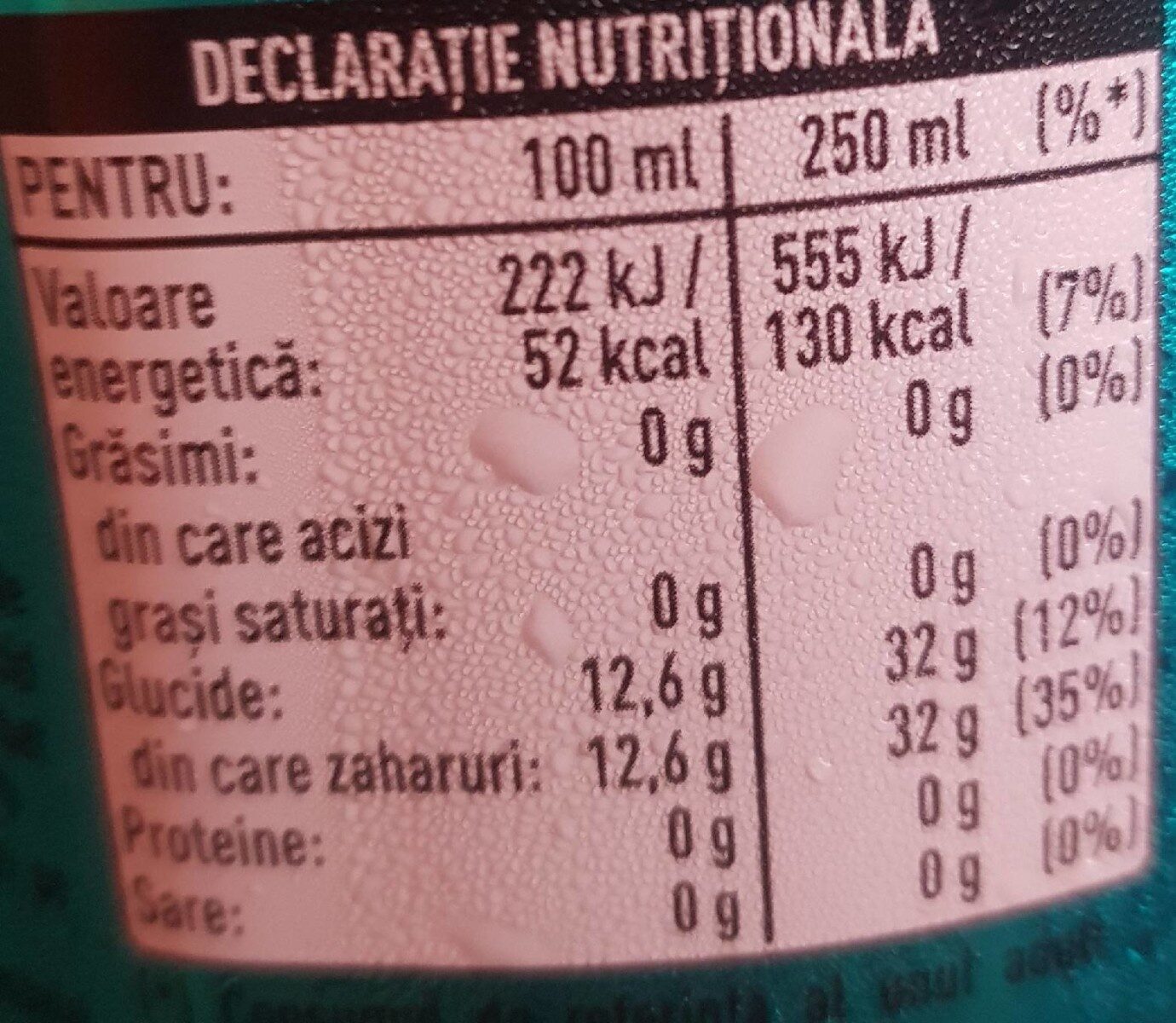Schweppes bitter lemon - 1.5 L
This product page is not complete. You can help to complete it by editing it and adding more data from the photos we have, or by taking more photos using the app for Android or iPhone/iPad. Thank you!
×
Barkod: 5449000044709 (EAN / EAN-13)
Common name: Osvežavajuće bezalkoholno piće sa ukusom limuna
Količina: 1.5 L
Ambalaža: en:Plastic, en:pet-polyethylene-terephthalate, en:Bottle
Брендови: Schweppes
Категорије: en:Plant-based foods and beverages, en:Beverages, en:Plant-based beverages, en:Carbonated drinks, en:Fruit-based beverages, en:Sodas, en:Fruit sodas, en:Sweetened beverages
Mesto u kojem se proizvodi ili prerađuje: Serbia
Matching with your preferences
Environment
Ambalaža
Transportation
Report a problem
Data sources
Product added on од bojackhorseman
Last edit of product page on од inf.
Страницу производа такође уредио bananaxddd, kiliweb, openfoodfacts-contributors, packbot, prigatg, scanbot, smoothie-app, yuka.K4lsP96yIN0mQPaM851p4TWqDunFH6Z-SHQ8og, yuka.R2FJYkdhNCsvdWN4d1BJWW9EL0Uvc3hNeVppR1hIcVBOZklPSVE9PQ, yuka.sY2b0xO6T85zoF3NwEKvlhBoS_rXpAjlEzntqFCgxtXRMcG2bPt80KjhGqo, yuka.sY2b0xO6T85zoF3NwEKvlhJBfMv6o2LbB0XmlUCv147UK4D6YPRNwK3eCas, yuka.sY2b0xO6T85zoF3NwEKvlncXa-LspiybbEHmmVShyOawDYfwZv5f26_dN6g.










